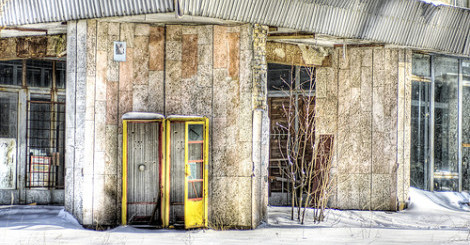

From the moment we split the atom, we have feared it will be our undoing. Films like Godzilla and Planet of the Apes are parables about the perils of nuclear experimentation. Names like Three Mile Island and Fukushima are reminders that the dangers are real, and just one of many reasons to ask: are we making the world better or worse? A survey of mammals in the area around Chernobyl has bolstered the pessimistic point of view. The nuclear disaster had dire immediate consequences for all life in the area, but this most recent finding suggests that, in the long run, large mammals are doing just fine. They have reached population densities comparable to undeveloped wildlife preserves, prompting the conclusion that routine human activity is worse for long-term flourishing than a nuclear meltdown.
In many ways, this result is not as surprising and not as dreary as it initially seems. Radioactive elements decay, limiting the damage a single event can cause; if you can wait long enough, all traces of the disaster will disappear. And any species, not just humans, occupying an ecological niche will necessarily limit the access of other organisms to that niche. At the same time, this study only looked at mammals large enough to be surveyed by helicopter; many other forms of life may still be manifesting consequences. And these mammals may be impacted in ways that aren’t apparent in their present population size. Of course, proving that the nuclear fallout is actually still worse than routine human activity would hardly constitute cause for celebration, since we’re on the hook for the meltdown too.
So, the upshot is that we have empirical evidence of human activity having negative consequences. No real shock there; we probably all have our own empirical experience of such negative consequences every day. They may not always be intended, but they are hard to deny in aggregate. What then are we to make of a world with both the potential for evils and actual evils? What are we to make of the God we believe created that world? This is one of the central questions addressed by the book I”ll be reviewing later this month.
Andy has worn many hats in his life. He knows this is a dreadfully clichéd notion, but since it is also literally true he uses it anyway. Among his current metaphorical hats: husband of one wife, father of two teenagers, reader of science fiction and science fact, enthusiast of contemporary symphonic music, and chief science officer. Previous metaphorical hats include: comp bio postdoc, molecular biology grad student, InterVarsity chapter president (that one came with a literal hat), music store clerk, house painter, and mosquito trapper. Among his more unique literal hats: British bobby, captain’s hats (of varying levels of authenticity) of several specific vessels, a deerstalker from 221B Baker St, and a railroad engineer’s cap. His monthly Science in Review is drawn from his weekly Science Corner posts — Wednesdays, 8am (Eastern) on the Emerging Scholars Network Blog. His book Faith across the Multiverse is available from Hendrickson.

Leave a Reply